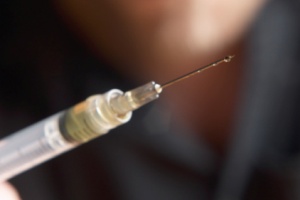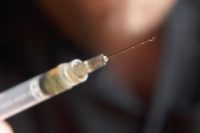 From 2000 through 2013, the age-adjusted rate for drug-poisoning deaths involving heroin nearly quadrupled from 0.7 deaths per 100,000 in 2000 to 2.7 deaths per 100,000 in 2013, according to the Centers for Disease Control and Prevention (CDC). Most of the increase occurred after 2010.
From 2000 through 2013, the age-adjusted rate for drug-poisoning deaths involving heroin nearly quadrupled from 0.7 deaths per 100,000 in 2000 to 2.7 deaths per 100,000 in 2013, according to the Centers for Disease Control and Prevention (CDC). Most of the increase occurred after 2010.
More men
The number of drug-poisoning deaths involving heroin was nearly four times higher for men (6,525 deaths) than women (1,732 deaths) in 2013.
In 2000, non-Hispanic black persons aged 45–64 had the highest rate for drug-poisoning deaths involving heroin (2.0 per 100,000). In 2013, non-Hispanic white persons aged 18–44 had the highest rate (7.0 per 100,000).
Greatest increase in the Midwest
From 2000 through 2013, the age-adjusted rate for drug-poisoning deaths involving heroin increased for all regions of the country, with the greatest increase seen in the Midwest.
The CDC says drug poisoning (overdose) is the number one cause of injury-related death in the United States, with 43,982 deaths occurring in 2013. While much attention has been given to deaths involving opioid analgesics, in recent years there has been a steady increase in the number of drug-poisoning deaths involving heroin.
A recent study using data from 28 states reported that the death rate for heroin overdose doubled from 2010 through 2012. Using data from the National Vital Statistics System, this data brief provides a description of trends and demographics for heroin-related drug-poisoning deaths in the United States from 2000 through 2013.
According to the CDC, identifying populations at high risk of heroin-related drug-poisoning death can help target prevention strategies.




